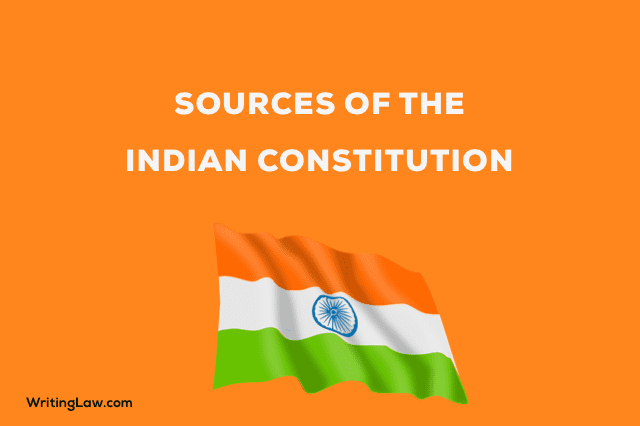
It is said that India does not have anything of its own in the Constitution because we have borrowed concepts from other nations’ Constitutions. In other words, our Constitution is considered a borrowing bag because we have adopted many of our constitutional concepts from different sources.
But there is nothing wrong with it. Adopting good things from others and assimilating in oneself is a wise act.
After independence, it was a challenge for constitutional drafters and makers to decide what to add and what not to. The country with diversity in culture, linguistics, beliefs, customs, and usages, which was ruled for so long, was to be given the Constitution. It was not an easy task.
Dr Bhim Rao Ambedkar, the chairman of the drafting committee and other members proved their capability and intelligence by giving to the people the Constitution of India.
Here are the country-wise sources from where we have adopted or borrowed the essential features of the Constitution of India.
Sources of the Indian Constitution
Government of India Act, 1935
These features of the current Indian Constitution have been inspired by the Government of India Act of 1935:
1. Federal system: Note: A federation with a strong centre has been borrowed from the Canadian Constitution but was a part of the Government of India Act of 1935.
2. Governor’s office
3. Structure of judiciary or the structure of Supreme Court, High Court and subordinate courts (Articles 124 to 147)
4. Public Service Commission (Articles 315 to 323)
5. Emergency provisions (Articles 352 to 360)
6. Distribution of power
British Constitution
The following features of the Constitution of India have been borrowed from the British Constitution:
1. Parliamentary system or parliamentary form of government
2. Legislative process or law-making procedure
3. Single citizenship (Articles 5-11)
4. Cabinet system
5. Writs (Article 32 and Article 226)
6. Parliamentary privileges
7. Bicameralism
8. Nominal head of state
9. Rule of law
10. Collective responsibility
11. Political party system
12. Real executives
Irish Constitution
The following provisions of the Indian Constitution have been borrowed from the Constitution of Ireland:
1. Directive Principles of State Policy (Article 36-51)
2. Method of the President’s election (Article 55)
3. Nomination of member in Rajya Sabha (Article 80)
American Constitution
The following provisions of the Indian Constitution have been taken from the Constitution of the United States:
1. Fundamental Rights (philosophical part) (Article 12 to 35)
2. Independence of Judiciary
3. Judicial review (Article 13)
4. Post of Vice-President
5. The Removal of Supreme Court and High Court Judges (Article 124(4))
6. Impeachment of President (Article 61)
7. Idea of the Preamble
8. Written Constitution
9. Equal Protection of the Law
Australian Constitution
The following features of the Indian Constitution have been borrowed from the Constitution of Australia:
1. Concurrent list mentioned in the 7th Schedule
2. Trade and commerce provisions (Articles 301 to 307)
3. Joint sitting of the two Houses of Parliament (Article 108)
4. Language of Preamble
Germany’s Constitution
This provision of the Indian Constitution has been borrowed from the Weimar (~current Germany) Constitution:
1. Suspension of fundamental rights during emergency
French Constitution
The following features of the Indian Constitution have been taken from the Constitution of France:
1. Republican structure
2. The ideals of liberty, equality, fraternity and republic, expressed in the Preamble
Japan’s Constitution
This feature of the Indian Constitution has been borrowed from the Constitution of Japan:
1. Procedure established by law (Article 21)
South Africa’s Constitution
The following provisions of the Indian Constitution have been taken from the Constitution of South Africa:
1. Amendment procedure of the Constitution (Article 368)
2. Election procedure of the members of the Rajya Sabha
USSR’s Constitution
The following provisions of the Indian Constitution have been taken from the Constitution of the Soviet Union (currently Russia):
1. Fundamental duties (Article 51A)
2. Ideals of justice – social, economic and political, expressed in the Preamble
3. Five-year plan
Canadian Constitution
The following provisions of the Indian Constitution have been taken from the Constitution of Canada:
1. Federal structure with a powerful center
2. Residuary power in the centre (Article 248)
3. Advisory jurisdiction of the Supreme Court (Article 143)
4. Union of India
5. Centre-state relations
6. Appointment of state government by the central government (Article 155 and Article 157)
These were all the 49 provisions of the current Indian Constitution taken from other countries around the world.
- 18 Most Important Amendments to the Indian Constitution - 12th August 2023
- 8 Kinds and Theories of Punishment - 22nd July 2023
- What Is the Meaning of Res Judicata in Civil Procedure Code? - 22nd January 2023








Nice piece of info.
Good to hear it.
Excellent, impressed by this content. Wow, in short it’s always always supportive for law students and people who are interested about Law.
Thank you very much for your kind, humble words.